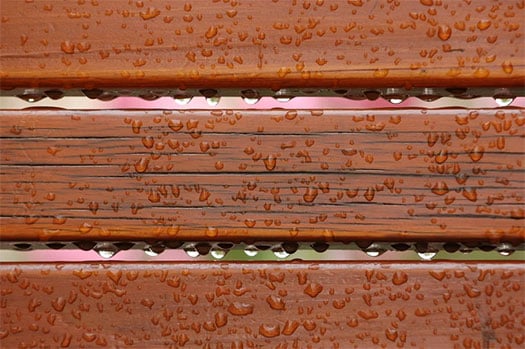What's your preferred way to measure humidity? Maybe you weren't aware there were multiple methods. However, how you measure indoor humidity levels is essential to maintaining comfort and healthy indoor air quality. 
Humidity is a metric that measures the mass of water vapor in the air, and excess humidity breeds more severe effects than sweat and discomfort. High humidity levels can ruin a building's infrastructure, damage assets, lead to mold growth, and cause adverse health effects.
Keeping healthy humidity levels requires understanding the different types of humidity measurements. There are two main types: relative and absolute humidity. Each type yields a different metric, helping you interpret the state of your air as you strike the perfect balance to achieve ultimate comfort in your home or place of work.
Below, we'll explain relative humidity vs. absolute humidity. You'll learn the importance of this distinction and how investing in an IoT sensor system is the key to maintaining safe humidity levels.
What Is Relative Humidity (RH)?
Humidity measures the moisture in the air. But why have multiple measurements? Let's start with relative humidity.
Say you check a weather forecast stating humidity levels outside are 85%. This number is relative humidity.
Relative humidity measures the grams of water droplets in the air relative to the actual air temperature. The reason is that, as temperatures decrease, the amount of water air can hold also decreases. At 86 degrees Fahrenheit, the air holds about 30 grams of water per cubic meter. However, at 32 degrees Fahrenheit, it holds a maximum of around five grams per cubic meter.
So, given that warmer air holds more moisture, as the temperature increases, the relative humidity decreases, even if moisture content stays the same. For example, an 80% reading at 86 degrees indicates 24g/m3, but an 80% reading at 32 degrees is 4g/m3.
Ultimately, relative humidity expresses how close air is to being saturated with water vapor. One hundred percent relative humidity means the air is fully saturated and cannot hold more moisture at that temperature, potentially leading to condensation or precipitation.
What Is Absolute Humidity (AH)?
In the other corner, you have absolute humidity.
The relative measurement gives you a humidity ratio depending on the temperature. However, the absolute humidity rating measures grams of moisture per cubic meter of air. This value does not change with temperature or pressure, and it's a direct measure of the amount of moisture in the air.
For example, you can have both a 5g/m3 absolute reading at 32 degrees and 86 degrees, even though relative humidity would be different.
Higher values indicate more water vapor in the air. It's a more straightforward measurement of moisture content, but it's also less helpful for indicating what humidity means in terms of human comfort and health. We explain more on this below.
Key Difference Between Relative Humidity vs. Absolute Humidity
Now you know the base definitions. However, there are additional differences, as these measurements are better or worse in different scenarios.
Units of Measurement
You express relative humidity as a percentage because it shows a ratio of how much actual moisture is present divided by what the maximum moisture could be. On the other hand, absolute humidity is a strict measurement in grams of moisture per cubic centimeter. However, absolute humidity can also be shown as a percentage that expresses moisture/per cubic meter of air.
Changes With Temperature
Always remember that relative humidity changes along with the temperature. Absolute humidity never changes, regardless of temperature.
Ultimately, relative humidity is an easier way to judge current levels in terms of how they impact the human body and could lead to damage to assets and infrastructure.
Indication of Comfort
Relative humidity is much simpler for interpreting how humidity affects human comfort because it adjusts to match indoor temperatures. For example, if you see 85% humidity, you know that's too high, regardless of how hot or cold it is.
For this reason, almost all indoor air quality sensor systems project a relative humidity level, making it much easier to understand if humidity must come up or down.
On the other hand, an absolute humidity reading measures grains of moisture and takes nothing into consideration of what it means in terms of comfort.
Health Impact
Keeping optimal humidity levels is critical to improving air quality in school buildings, homes, and office spaces. Ideally, humidity levels should be kept between 30 and 50%. Too far below, you begin experiencing dehydration and nose and eye irritation. Excessive humidity levels lead to sweating and poor sleep and even promote the growth of dangerous allergens, pollens, and molds.
So, which measurement is best for understanding health? Again, the winner is relative humidity.
Relative humidity is much more effective for gauging the potential health impacts of poor humidity levels because it allows those responsible to take immediate action. Sure, an absolute humidity reading is the first step to understanding the moisture content in the air, but it takes extra work to measure the potential impacts.
Invest in the Best: Attune's IAQ Monitoring Solution
Maintain the best humidity levels in your building by investing in Attune's state-of-the-art indoor air quality monitors. Attune's high-tech humidity sensors track relative and absolute humidity in real time and administer direct alerts as soon as they pick up uncomfortable humidity levels.
Our system is incredibly easy to get running and can be set up to track indoor humidity levels in minutes. Best of all, it reduces labor for you. Our smart sensors automatically take humidity readings and adjust your HVAC systems to optimize indoor climates so you always have ideal humidity levels.
Learn more about how our indoor air quality sensors can dramatically improve your indoor air levels, and sign up today to schedule a demo.

